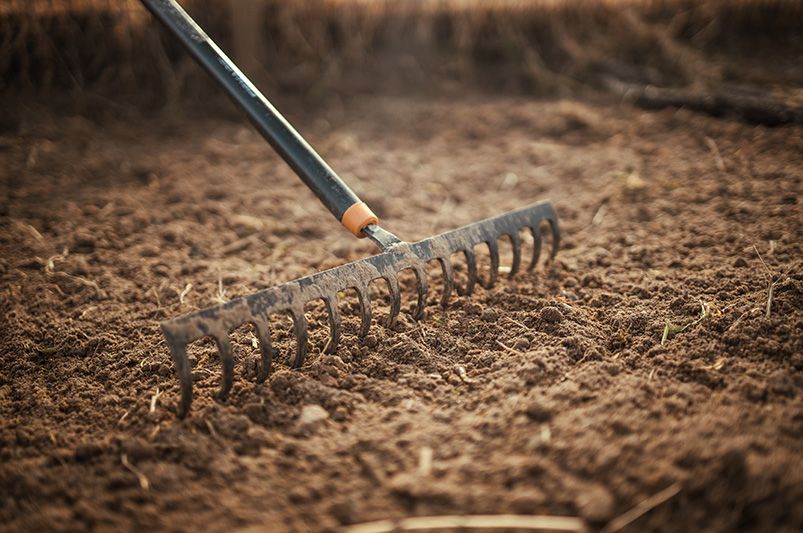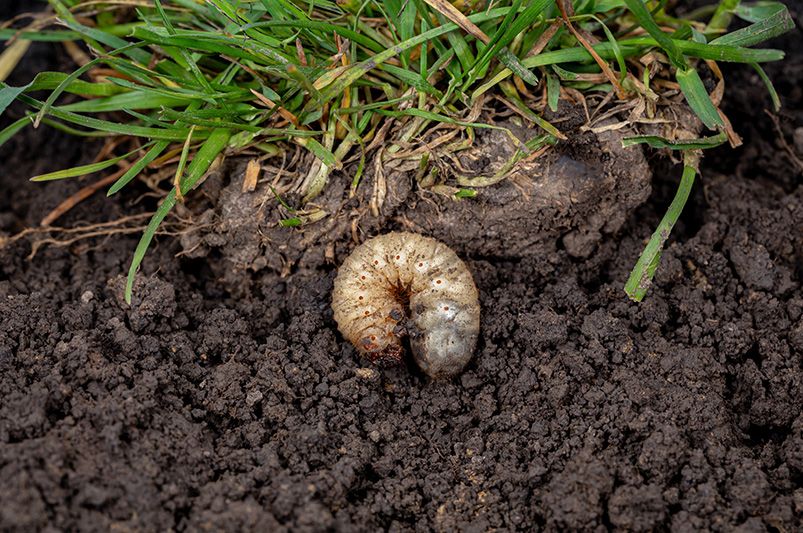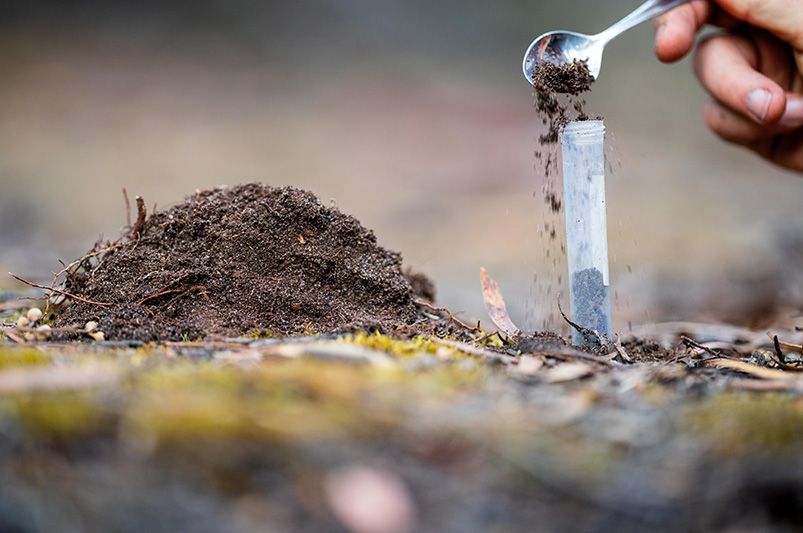
Why your lawn needs love too: The importance of soil health
Published: 27/08/2024 | Updated: 27/08/2024
Why Your Lawn Needs Love Too: The Importance of Soil Health
Understanding Soil Health
Healthy soil is more than just dirt; it is a dynamic, living ecosystem that supports plant growth and overall lawn vitality. To truly appreciate the importance of soil health, it is essential to understand its components and how they contribute to a thriving lawn.
Components of Soil Health
-
Soil Structure: The physical arrangement of soil particles (sand, silt, and clay) determines soil structure. Good soil structure has a crumbly texture, allowing air, water, and roots to move freely. This promotes strong root development and efficient nutrient uptake.
-
Soil Composition: Healthy soil contains a balanced mix of organic matter, minerals, air, and water. Organic matter, such as decomposed plant and animal materials, enriches the soil with essential nutrients and improves its ability to retain moisture.
-
Microbial Activity: Soil is teeming with beneficial microorganisms like bacteria, fungi, and earthworms. These organisms break down organic matter, recycle nutrients, and enhance soil structure, creating a fertile environment for your lawn.
The Role of Soil in Supporting Plant Growth
-
Nutrient Supply: Soil provides essential nutrients that plants need for growth, such as nitrogen, phosphorus, and potassium. Healthy soil has a rich nutrient profile, ensuring that your lawn gets the nourishment it requires.
-
Water Management: Proper soil health improves water retention and drainage, preventing issues like waterlogging or drought stress. Well-structured soil retains moisture during dry periods and drains excess water during heavy rains, maintaining an optimal balance.
-
Root Development: Healthy soil promotes robust root systems, anchoring your lawn securely and enabling it to absorb water and nutrients efficiently. Strong roots are crucial for a resilient lawn that can withstand environmental stress and recover quickly from damage.
Signs of Healthy vs. Unhealthy Soil
- Healthy Soil: Dark, rich color; crumbly texture; good drainage; abundant earthworms and microbial activity; lush, green grass growth.
- Unhealthy Soil: Compacted or hard texture; poor drainage; sparse or yellowing grass; few signs of earthworms or microbial life.
By understanding these components and their roles, you can better assess and improve your soil health, laying the groundwork for a beautiful and resilient lawn.

Benefits of Healthy Soil for Your Lawn
Maintaining healthy soil is crucial for cultivating a lush, vibrant lawn. Healthy soil offers numerous benefits that enhance your lawn's appearance, resilience, and overall health. Here are some of the key advantages:
Improved Nutrient Availability and Absorption
Healthy soil is rich in essential nutrients like nitrogen, phosphorus, and potassium, which are vital for grass growth. These nutrients are more readily available to plants in healthy soil, allowing your lawn to absorb what it needs to thrive. The result is a lawn that is lush, green, and full of life.
Enhanced Water Retention and Drainage
One of the most important benefits of healthy soil is its ability to manage water effectively. Well-structured soil retains moisture during dry periods, ensuring your lawn has a consistent water supply. Conversely, it also drains excess water efficiently, preventing issues like waterlogging and root rot. This balance is crucial for maintaining a healthy lawn, especially in areas with variable weather conditions.
Increased Resistance to Pests and Diseases
A lawn growing in healthy soil is more resilient against pests and diseases. Healthy soil supports robust root systems and promotes strong, vigorous growth, making your lawn less susceptible to damage from insects, fungi, and other pathogens. Additionally, beneficial microorganisms in healthy soil can outcompete harmful ones, further protecting your lawn from potential threats.
Better Root Development and Lawn Resilience
Healthy soil encourages deep and extensive root systems. Strong roots anchor the grass firmly in the ground, helping it withstand environmental stresses like drought, heavy foot traffic, and extreme temperatures. A well-rooted lawn is also better equipped to recover from damage, ensuring it remains beautiful and functional throughout the year.
By prioritizing soil health, you can unlock these benefits and enjoy a lawn that is not only aesthetically pleasing but also robust and easy to maintain.
Common Soil Problems
Despite your best efforts, soil health can sometimes be compromised by various issues. Identifying and addressing these common soil problems is essential for maintaining a vibrant and resilient lawn.
Compacted soil occurs when soil particles are pressed tightly together, reducing pore space and limiting air and water movement. This can result from heavy foot traffic, machinery, or even heavy rainfall. Compacted soil restricts root growth, reduces nutrient uptake, and impairs water drainage, leading to a weak and unhealthy lawn. To address this, regularly aerate your lawn by creating small holes in the soil to improve air, water, and nutrient flow to the roots. Additionally, minimize heavy foot traffic on your lawn, especially when the soil is wet, to prevent further compaction.
Poor soil drainage can be due to heavy clay soils, improper grading, or compaction. Waterlogged soil deprives roots of oxygen and can lead to root rot and other issues. Poor drainage prevents proper root function and can lead to fungal diseases and weak, patchy grass. Improving soil structure by incorporating organic matter, such as compost or well-rotted manure, can help enhance soil drainage. Ensuring your lawn has a slight slope away from buildings will also promote proper drainage.
Nutrient deficiencies occur when essential nutrients are depleted from the soil over time, especially if they are not replenished through fertilization or organic matter. Nutrient deficiencies result in poor grass growth, yellowing leaves, and overall weak lawn health. Conduct regular soil tests to identify nutrient deficiencies, which will help you determine the specific fertilizers or amendments needed. Use a balanced fertilizer that provides essential nutrients, such as nitrogen, phosphorus, and potassium, to maintain soil fertility.
Soil pH imbalances can arise from various factors, including the type of soil, rainfall, and the use of certain fertilizers. Imbalanced soil pH affects nutrient availability, making it difficult for grass to absorb essential nutrients. Regularly test your soil's pH to determine if it falls within the ideal range, typically 6.0 to 7.0 for most lawns. Use lime to raise the pH of acidic soil or sulfur to lower the pH of alkaline soil, based on soil test results.
By addressing these common soil problems, you can create an optimal environment for your lawn to thrive.

How to Improve Soil Health
Improving soil health is a continuous process that involves various practices to ensure your lawn remains lush and resilient. Here are some practical steps to enhance and maintain the health of your soil.
Aeration
Aeration is essential for relieving soil compaction and improving air, water, and nutrient flow to the roots. Regularly aerating your lawn by creating small holes in the soil helps alleviate compaction, allowing your grass to develop strong and deep root systems.
Adding Organic Matter
Adding organic matter, such as compost or well-rotted manure, is another crucial step in improving soil health. Organic matter enriches the soil with essential nutrients and enhances its structure, water retention, and drainage capabilities. It also fosters a thriving ecosystem of beneficial microorganisms that contribute to soil fertility.
Regular Soil Testing
Regular soil testing is important for identifying nutrient deficiencies and pH imbalances. By conducting soil tests, you can determine the specific fertilizers or amendments needed to maintain optimal soil health. Soil tests provide valuable insights into your soil's nutrient profile, helping you make informed decisions about fertilization and other soil treatments.
Appropriate Fertilization
Appropriate fertilization involves using the right types and amounts of fertilizers to support healthy lawn growth. Choose balanced fertilizers that provide essential nutrients like nitrogen, phosphorus, and potassium. Follow recommended application rates and schedules to avoid over-fertilization, which can harm both your lawn and the environment.
Encouraging Beneficial Soil Organisms
Encouraging beneficial soil organisms is vital for maintaining a healthy soil ecosystem. Practices such as mulching and reducing the use of chemical pesticides can help create an environment where beneficial microorganisms, earthworms, and other soil-dwelling creatures can thrive. These organisms play a crucial role in breaking down organic matter, recycling nutrients, and improving soil structure.
By implementing these practices, you can significantly improve the health of your soil, leading to a more vibrant and resilient lawn. A well-maintained lawn not only enhances the beauty of your outdoor space but also provides a comfortable and enjoyable area for various activities.




